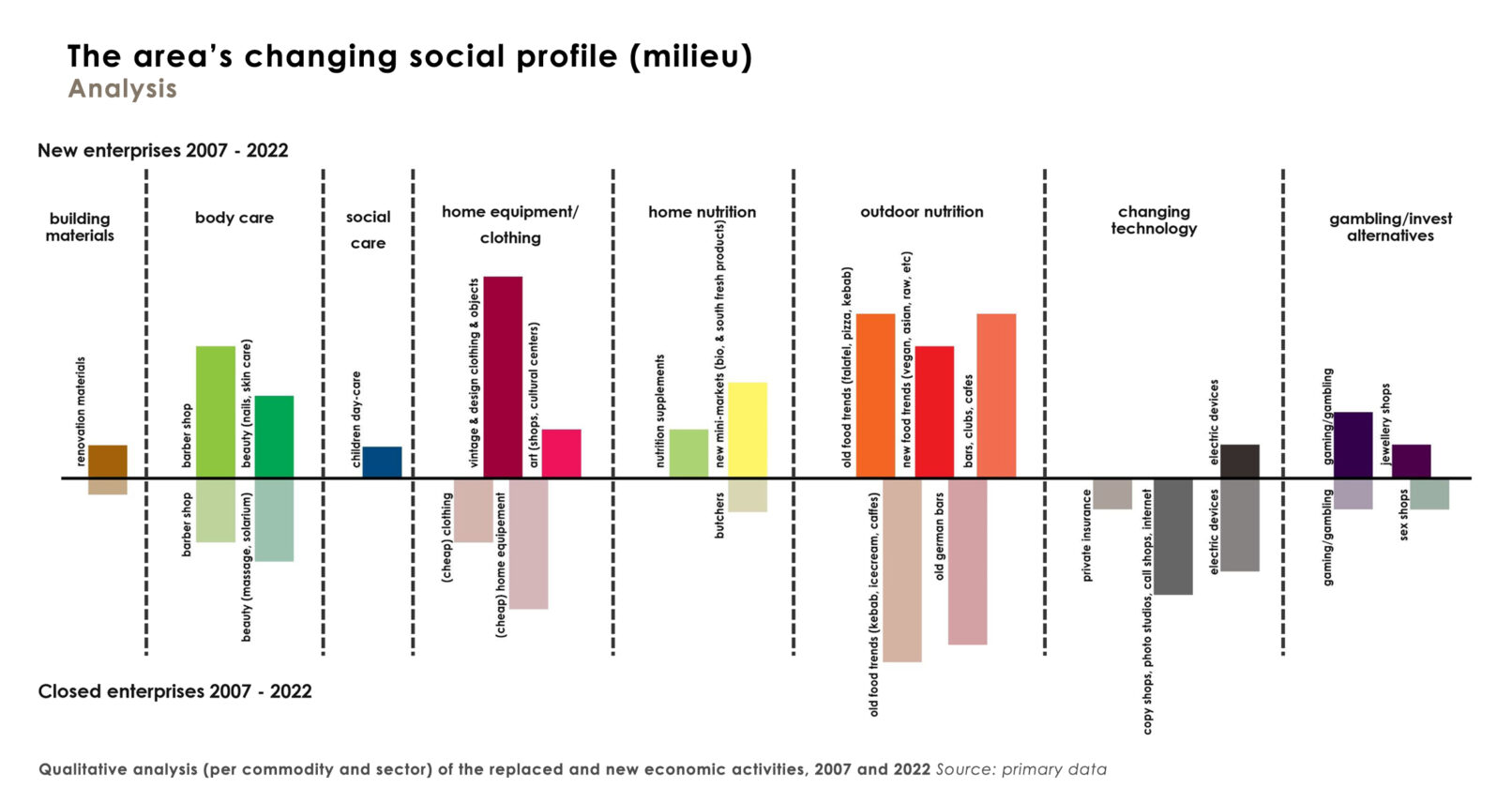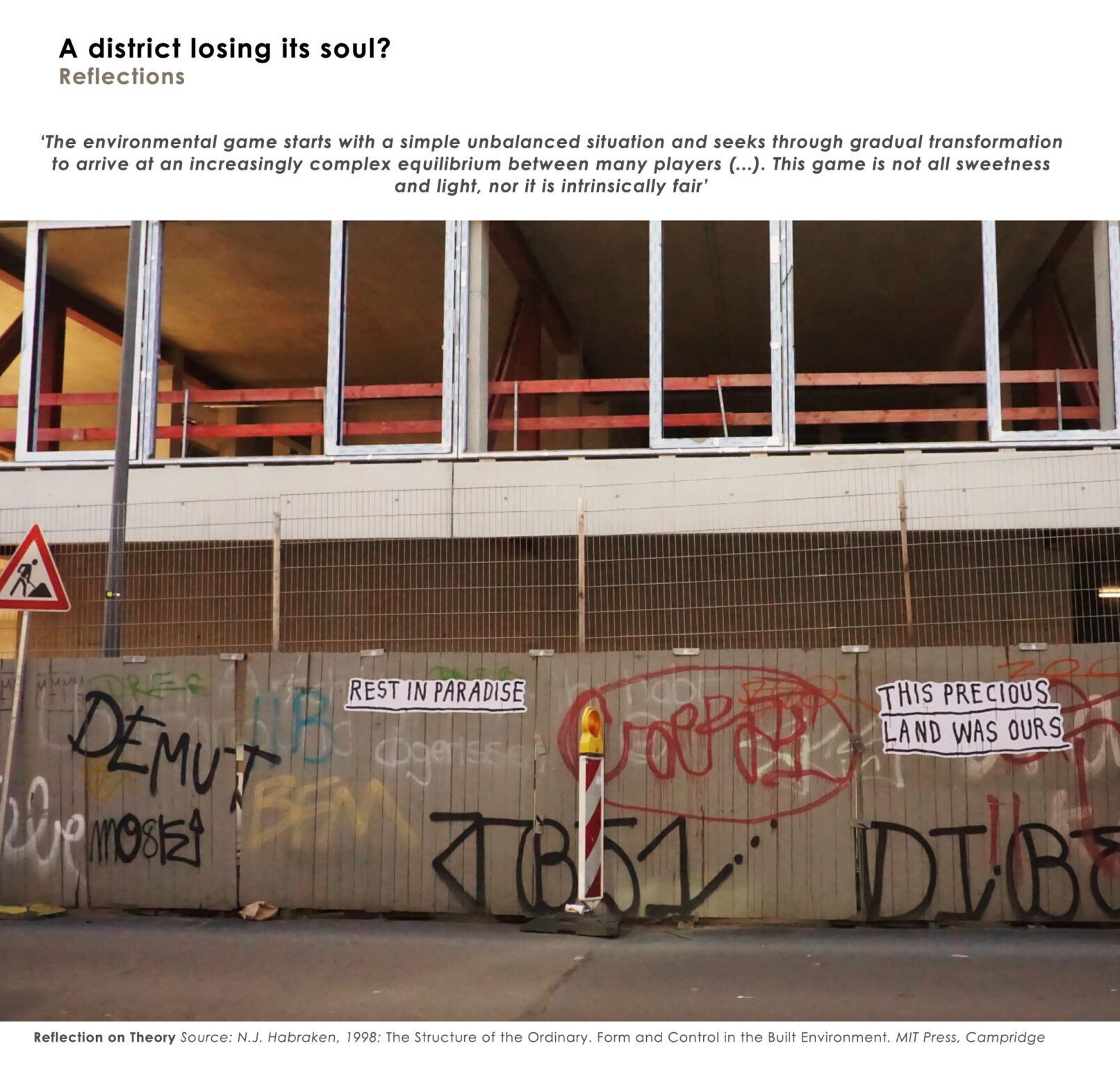Non-designed Dynamics in Ehrenfeld, Cologne
A project by Seif Awad and Stella Moulara
Supervisor: Dr. Stefano Cozzolino
Aim of the research
Our project focuses on Ehrenfeld, one of the most vibrant and ‘hip’ districts of Cologne. We approach the non-planned, spontaneous characteristics that make on one hand Ehrenfeld’s urban culture so beloved to its residents or visitors and on the other hand its land so attractive to housing developers. In other words, we see the area through the kaleidoscope of the Market: this huge, non-designed sum of small decisions of numerous players with different perspectives and occasionally contradictory or compliant interests. From our point of view those decisions are not chaotic, but form the streams of spontaneous order; they are the main generators of physical and social space.
Method and Results
We firstly observed and recorded in the form of a calendar the designed and non-designed elements in the various scales of the built environment and in the everyday life of the neighbourhood. After this informal list we decided to focus on Venloer street, as the most vibrant axis of the area, in relation to the part of the district that is either newly built or under construction, as the most dynamically changing part of it. We supposed that the liveliness of Venloer Str. is highly related to the changes happening in the newly constructed urban blocks. Regarding the Venloer str. we recorded the changes that happened in the last 15 years approximately regarding the land uses. We found out that this commercial street is changing and economically booming. Apart from that we spotted the qualitative changes in this market: some of the old migrant shops have been replaced; some of them have moved to better spots in the same street, although smaller. More space has been given to consumption habits indicating higher (middle class) milieus. This change in the habitus of the district can be noticed also in the land and housing prices. In turn it has vertically increased the construction process, as the borders of the district –former industrial area- give plenty of chances for housing development. In our perspective those dynamics happen under the market function that serve realistic, practical needs of many users and include currently many stakeholders. We reflect however our question, if the newly built areas enrich or diminish the physical and social elements that made in the past years Ehrenfeld the attractive neighbourhood that it is.




